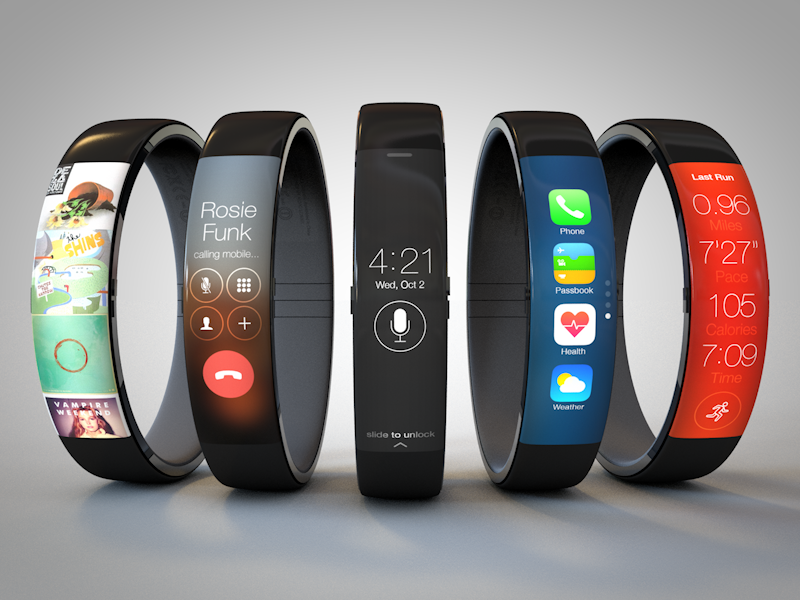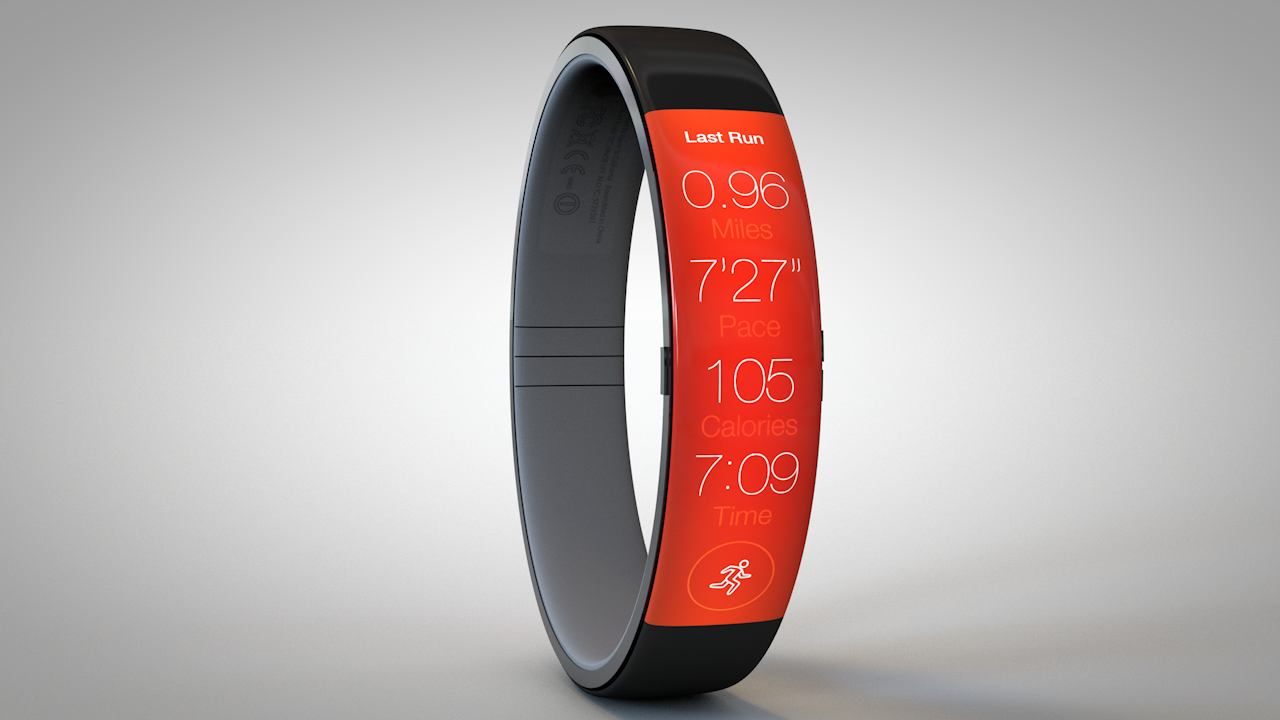According to a new report by Brian Dolan of MobiHealthNews, the rumored Apple wearable device, the iWatch, may have simpler technological capabilities than those high-profile hirings, job ads, patents and rumors would have you believe.
Citing unnamed sources with “limited but direct knowledge,” the report claims the iWatch is more of a companion than a standalone device.
In other words, it may require the iPhone for much of its functionality. MobiHealthNews doesn’t have an established track record in terms of Apple rumors so the story should be taken with a grain of salt.
On the other hand, the publication did accurately reveal that Apple hired Michael O’Reilly, former chief medical officer and executive vice president of medical affairs at pulse oximeter firm Masimo Corporation…
The report tempers iWatch expectations by claiming that the the U.S. Food and Drug Administration (FED) won’t regulate the wrist-worn accessory and the rumored Healthbook app, indicating the device may not include advanced health sensors for glucose sensing and hydration tracking as initially thought.
Apple’s Michael O’Reilly, SVP of Operations Jeff Williams, VP of software and Technology Bud Tribble and government affairs counsel Tim Powderly met with the FDA in December to discuss “mobile medical applications,” as per The New York Times.
That meeting was about remaining unregulated, MobiHealthNews claims:
The meeting with the agency was likely to review the FDA’s recently published final guidance document on mobile medical apps. Keeping the Healthbook app on the right side of FDA regulation means the app won’t be able to offer too much in the way of analysis for medical data.
Next, the author writes that the Healthbook app, which the source said may not be the real name, is Apple’s way of boosting the ecosystem of health app developers and health wearable makers, which sounds about right.
“It will likely evolve into a repository for health and fitness information — and where allowable by the regulators — provide feedback and analysis of that data,” the story notes.
The application is said to focus on exercise, diet, sleep, stress, medication adherence.
It’s also likely it will include “tracking for women’s health and pregnancy tracking features” and perhaps feature certain chronic condition management features by pulling data from third party FDA-cleared medical devices.
“As long as Apple doesn’t analyze the data from a regulated medical device, it can still display it in its app without having to get Healthbook cleared as a Class II medical device,” writes the author.
Brian’s source is highly skeptical of hydration monitoring via a sensor, describing the health sensing capabilities as “efficacious,” specifically tempering expectations for advanced functions like glucose sensing.
Most importantly, the iWatch is a peripheral device, not a primary one.
The iWatch is also not a primary device, a source says, but a peripheral one. That means it will require connectivity to a smartphone for its full functionality.
While I can imagine embedding cellular into such a device — assuming it has some health sensing capabilities — is likely not possible yet because of power constraints, WiFi-connectivity might mean the device is as much a primary device as most dedicated fitness tracking devices are today.
But will the iWatch be a tiny smartphone on your wrist? Our source says no.
Finally, the story goes on to note that the iWatch team has grown to 200 people, double the 100 engineers on the team as reported by Bloomberg a year ago.
Apple over the past twelve months has been on a hiring spree, luring high-profile executives and engineers from fashion labels, biosensing and medical devices startups, as well as established Silicon Valley giants like Adobe and consumer electronics brands such as Philips.
Cody’s exhaustive list mentions some of the more prominent engineers on the project.
And what are your expectations of the iWatch?

